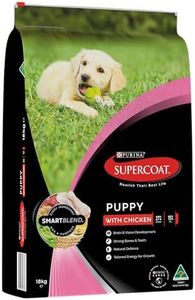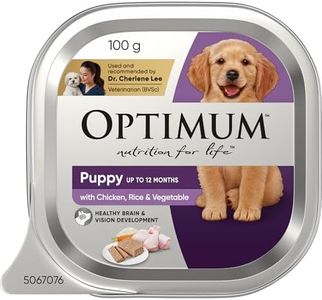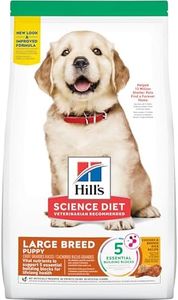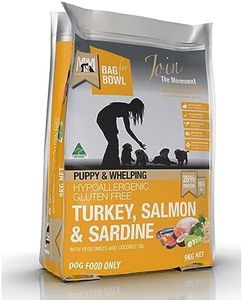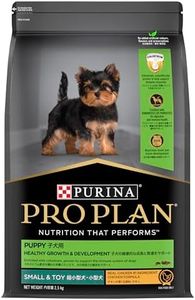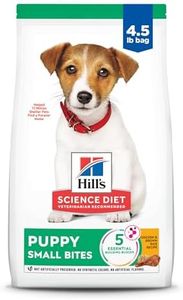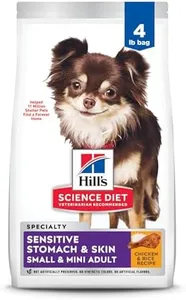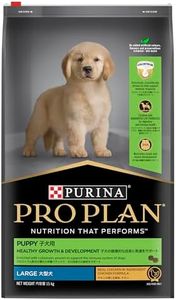We Use CookiesWe use cookies to enhance the security, performance,
functionality and for analytical and promotional activities. By continuing to browse this site you
are agreeing to our privacy policy
10 Best Puppy Food
From leading brands and best sellers available on the web.Buying Guide for the Best Puppy Food
Choosing the right puppy food is important for supporting your young dog's growth and setting the foundation for a healthy life. Puppies have unique nutritional needs, so it’s important to select a formula designed just for them. You’ll want to pay attention to key aspects like nutrition balance, food type, ingredient quality, and your puppy’s specific requirements such as breed size and sensitivities. By understanding the important specs of puppy food, you can make sure your new furry friend gets the best start possible.Nutritional BalanceNutritional balance in puppy food means it contains the right mix of proteins, fats, vitamins, and minerals needed for healthy development. This is crucial because puppies are growing rapidly, so they need more nutrients than adult dogs. When looking at the nutrition information, you'll see percentages for protein and fat—puppies need higher protein and fat levels to support muscle and brain development. Look for foods labeled as 'complete and balanced' for puppies to ensure you’re meeting all their needs. Think about your puppy's activity level and size; active or large-breed pups may need a specific balance to prevent growth issues.
Food Type (Dry, Wet, Raw, etc.)Puppy food comes in several forms, mainly dry kibble, wet/canned, freeze-dried, and raw. Dry food is convenient and promotes dental health, while wet food is often more palatable and hydrating. Raw and freeze-dried options can be nutrient-rich but may require more careful handling. Choosing between these often comes down to your puppy’s preferences, dental needs, and your convenience. For example, small breed puppies or picky eaters might prefer wet or semi-moist foods, while larger breeds or those who need more crunch for their teeth could benefit from dry kibble.
Ingredient QualityIngredient quality refers to the source and grade of the components in the puppy food. High-quality foods typically list real meat as the first ingredient and minimize fillers like corn, soy, or artificial additives. This is important because quality ingredients are more digestible and provide better nutrition. Review the ingredient list for whole, recognisable foods and avoid those with too many vague terms like ‘meat by-product’. If your puppy has sensitivities or allergies, opt for foods with limited, simple ingredients.
Breed Size FormulaBreed size formula means the food is specially designed for small, medium, or large breed puppies. This matters because different sizes of puppies grow at different rates and have varying nutritional needs. For instance, large-breed puppies require controlled calcium and energy levels to prevent joint issues, while small breeds need more calorie-dense food in smaller pieces for their tiny mouths. Always match the formula to your puppy’s expected adult size to promote healthy growth.
DigestibilityDigestibility indicates how easily your puppy can break down and absorb the nutrients in the food. Highly digestible foods result in less stool and healthier digestion, which is important for a puppy’s developing tummy. You can assess digestibility by the quality of ingredients (lean meats and whole grains are better) and by observing your puppy’s stool and overall health. If your puppy has frequent digestive upsets or loose stools, consider foods specifically labeled for sensitive digestion.
Life Stage AppropriatenessLife stage appropriateness simply means the food is designed not just for dogs, but specifically for puppies. Puppies need more calories, protein, and specific nutrients compared to adult dogs. Check the packaging for statements like 'formulated for puppies' or 'growth and development'. Feeding your puppy the wrong life stage food can lead to nutritional imbalance and affect their development.
